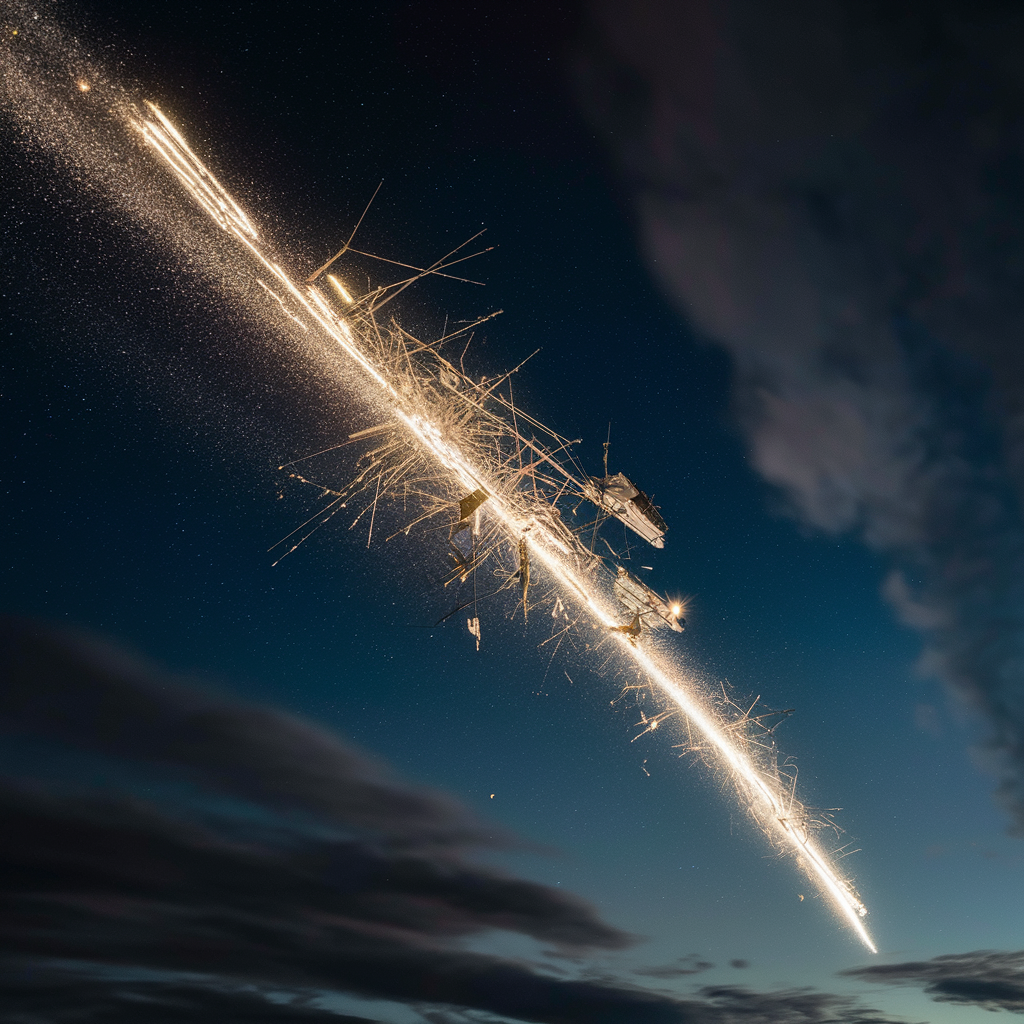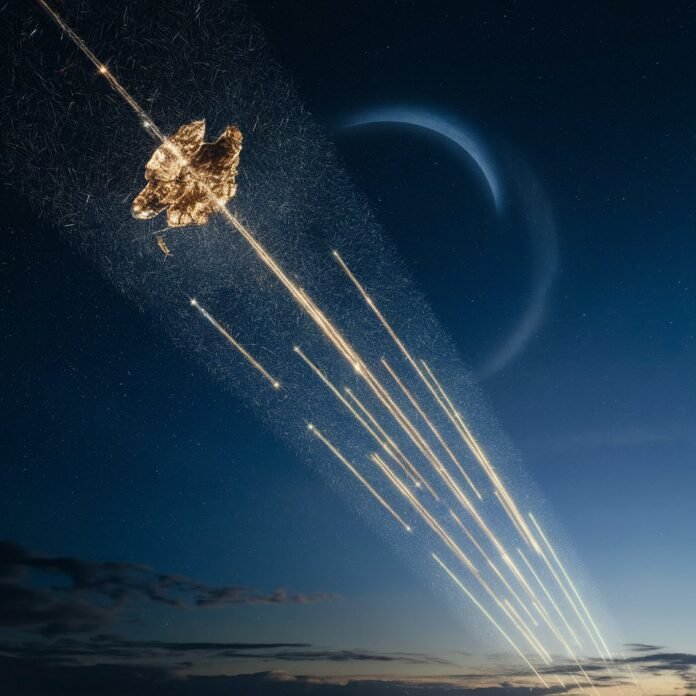Introduction
Residents across the Midwest were treated—or startled—by an unexpected celestial light show as fiery streaks blazed across the night sky on [insert date]. Reports flooded social media as witnesses described glowing fragments breaking apart in a dazzling, if unnerving, display. Early speculation points to debris from a suspected starlink satellite debris lights up midwest sky re-entering Earth’s atmosphere, though official confirmation remains pending. The event reignites debates about space traffic, the risks of orbital debris, and what happens when humanity’s technological footprint literally comes crashing back down. This article examines the incident, its potential causes, and the broader implications of our increasingly crowded skies.
1. Eyewitness Accounts: “It Looked Like a Meteor Storm—But Wrong”
From Chicago to St. Louis, startled observers took to platforms like X and Reddit, sharing videos of shimmering objects moving in eerie unison before disintegrating. Unlike typical meteor showers, which streak randomly, these lights followed a clustered, deliberate trajectory—a telltale sign of artificial space debris. One amateur astronomer noted, “Meteors don’t break apart in slow, controlled bursts like that.” The Federal Aviation Administration (FAA) and SpaceX have yet to confirm the source, but experts suggest a defunct Starlink satellite or discarded rocket stage as the likely culprit. Such events are becoming more frequent as low-Earth orbit grows congested with thousands of satellites, raising questions about predictability and public safety.
2. The Starlink Factor: SpaceX’s Expanding Legacy—and Liability
SpaceX’s Starlink constellation, designed to provide global internet coverage, now comprises over 5,000 satellites, with plans for tens of thousands more. While revolutionary, the mega-constellation has drawn criticism for contributing to space debris. Satellites in low orbits eventually lose altitude and burn up, but larger components sometimes survive re-entry, posing minimal but nonzero risks to people and property. In 2022, a Starlink satellite fragment landed on an Australian farm; this Midwest event suggests such occurrences may become routine. Astronomers also warn that uncontrolled re-entries could release toxic materials like aluminum oxides into the atmosphere, though SpaceX claims its satellites are designed to fully disintegrate. As private companies dominate space, who ensures their debris doesn’t become someone else’s problem?
3. The Science of Space Junk: Why Debris Lights Up the Sky

The mesmerizing glow of burning space debris stems from extreme friction as objects re-enter the atmosphere at speeds exceeding 17,000 mph. Unlike natural meteors (which are often small and icy), artificial debris—made of metals like titanium and stainless steel—vaporizes more dramatically, creating brighter, slower-moving fireballs. The Midwest spectacle likely involved a satellite’s solar panels or fuel tanks, which can fracture into multiple glowing fragments. While most debris burns up harmlessly, the U.S. Space Surveillance Network tracks over 27,000 larger objects to predict potential hazards. Yet, with no international cleanup protocols, the sky’s “junk drawer” keeps growing, turning re-entry light shows into a symptom of a larger orbital pollution crisis.
4. Close Calls and Near Misses: A History of Falling Space Hazards
This isn’t the first time space debris has made headlines. In 1979, NASA’s Skylab station rained chunks over Western Australia, prompting fines for littering (later paid by a radio DJ as a joke). More recently, China’s uncontrolled Long March rocket re-entries sparked diplomatic ire. The difference now? Frequency. With SpaceX launching weekly and other companies following suit, uncontrolled re-entries may shift from anomalies to expected events. The FAA requires some risk assessments for U.S. launches, but global standards remain patchy. As space lawyer Michelle Hanlon puts it, “We’re at the ‘Wild West’ phase of commercial space—accidents will drive regulation, not the other way around.”
5. Policy in a Post-Debris World: Who Regulates the Final Frontier?
Current space law, rooted in the 1967 Outer Space Treaty, is ill-equipped for today’s commercial boom. The treaty makes nations liable for objects they launch but lacks enforcement mechanisms for debris mitigation. Proposed solutions include:
-
Active debris removal (ESA’s ClearSpace mission aims to capture junk by 2026)
-
Design mandates (e.g., SpaceX’s “demisable” satellites)
-
End-of-life insurance (requiring companies to fund cleanup)
Yet with rival nations and corporations jostling for orbital real estate, cooperation is elusive. The Midwest incident underscores an urgent truth: as space becomes an economic battleground, its sustainability can’t be an afterthought.
Conclusion: A Glowing Reminder of Our Orbital Footprint
The Midwest’s unexpected light show was more than a viral moment—it was a visceral reminder that space isn’t as distant as it seems. Each flaming fragment represents humanity’s unchecked expansion into orbit, where innovation outpaces accountability. While no injuries were reported this time, the event signals a looming era of “space litter” with real-world consequences. As Starlink and similar projects proliferate, the question isn’t just what fell, but what we’ll do before the next piece comes down.


